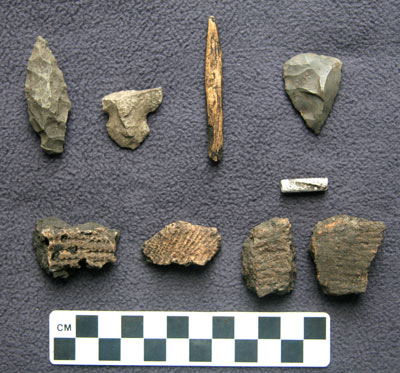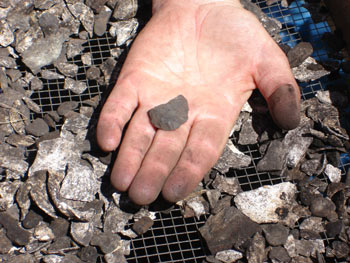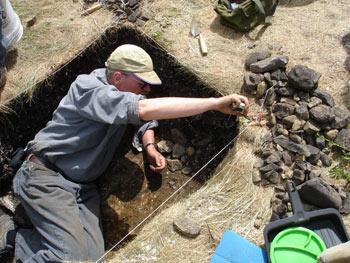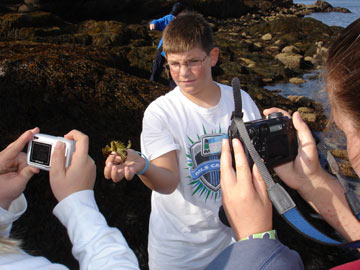By Bill Haviland, IHT Trustee.
One of the Island Heritage Trust’s more popular preserves is the Reach Beach at Gray’s Cove. But Gray’s Cove wasn’t always called that; originally it was Campbell’s Cove and the land to the south, now Oak Point, was called Campbell’s Neck.
The original name comes from John Campbell (1730-1820), a native of Arglyshire in Scotland who came to Deer Isle around 1780 and settled on the Reach. He was not the first to do so for as early as 1753, just before the start of the last of the French and Indian wars, William Greenlaw (also from Scotland) with his family moved onto 500 acres that stretched between what later would be called Torrey’s Mill Pond and Campbell’s Neck. Because the Greenlaws had Tory sympathies during the American Revolution, they found it expedient to flee to New Brunswick in Canada after the war. Not until some years later did some of William’s descendants return to the island, and then to Oceanville.
John Campbell acquired some of the Greenlaw lands and then some; large for the time, his holdings took in Campbell Island (on which IHT has an easement) all of what is now called Oak Point, and the lands north to beyond the junction of the Fish Creek and Reach roads, and west nearly to the junction of Fish Creek and Greenlaw District Roads.
In all, this amounted to something on the order of 460 acres. His homestead stood until nearly the end of the 20th Century at Poplar Point at the end of a private road now called Alberta Lane. By then, it had fallen into such disrepair that the Deer demolished it and the Deer Isle Fire Department used it as a means of practicing firefighting.
Campbells continued to occupy the old homestead well into the twentieth century, the last being John’s great grandson, Arthur. He is listed in the 1910 census as a farmer and lobster buyer. Arthur’s mother, Diana Campbell Hardy Campbell, was herself a granddaughter of John Campbell’s daughter Sarah. Diana’s husband, quite a bit older than she, was the son of her father’s mother’s brother. After Arthur’s death in 1951, what was left of the Campbell holdings, including the old homestead, passed to the Hutchinson descendants of Diana’s daughter May, who was fathered by her mother’s second husband, George Hatch (Hutchinson was May’s married name). Thus, the place continued to be occupied by John Campbell’s descendants until recently.
John Campbell’s daughter Sarah married Peter Hardy, Jr. (1770-1863), a master mariner who, over the course of his life, served several times as selectman and two terms in the state legislature. Although he already had a 100-acre farm – the fourth one north of Campbell’s – John deeded to his new son-in-law a 100-acre parcel running from the northwest shore of Campbell’s Cove westward along the north shore of Fish Creek. Peter and Sarah never lived there, however. Instead, they traded this parcel for the farm of Benjamin Weed (on the south end of Little Deer ) from Weed’s Point (east to the end of Weed Point Rd.). Peter and Sarah’s homestead stood where the McWilliams house now stands.
Eventually, Josiah Gray of Brooksville, who had married a daughter of Benjamin Weed, acquired the farm that his father-in-law had gotten from Peter Hardy. Together, the Grays raised thirteen children, one of whom married Silas Hardy Gray. He was the
son of Isaac Gray who settled on Little Deer Isle some time after 1800. Among Isaac’s neighbors were Peter Hardy and Jonathan Hardy, whose farm was where the bridge now lands on Little Deer. Both Jonathan and Peter had sons named Silas so obviously a close time must have existed between these Hardys and Grays.
After Josiah’s death, Silas lived in his father-in-law’s homestead until his own death in 1882. The house still stands not far from the cove; it is the first one on right-hand side of Oak Point Rd., south of the intersection of Fish Creek Rd. Either Silas’ wife’s mother and father are said to be buried behind the house. With Josiah and then Silas in residence there, the cove lost the original name and became Gray’s Cove as we know it today.




